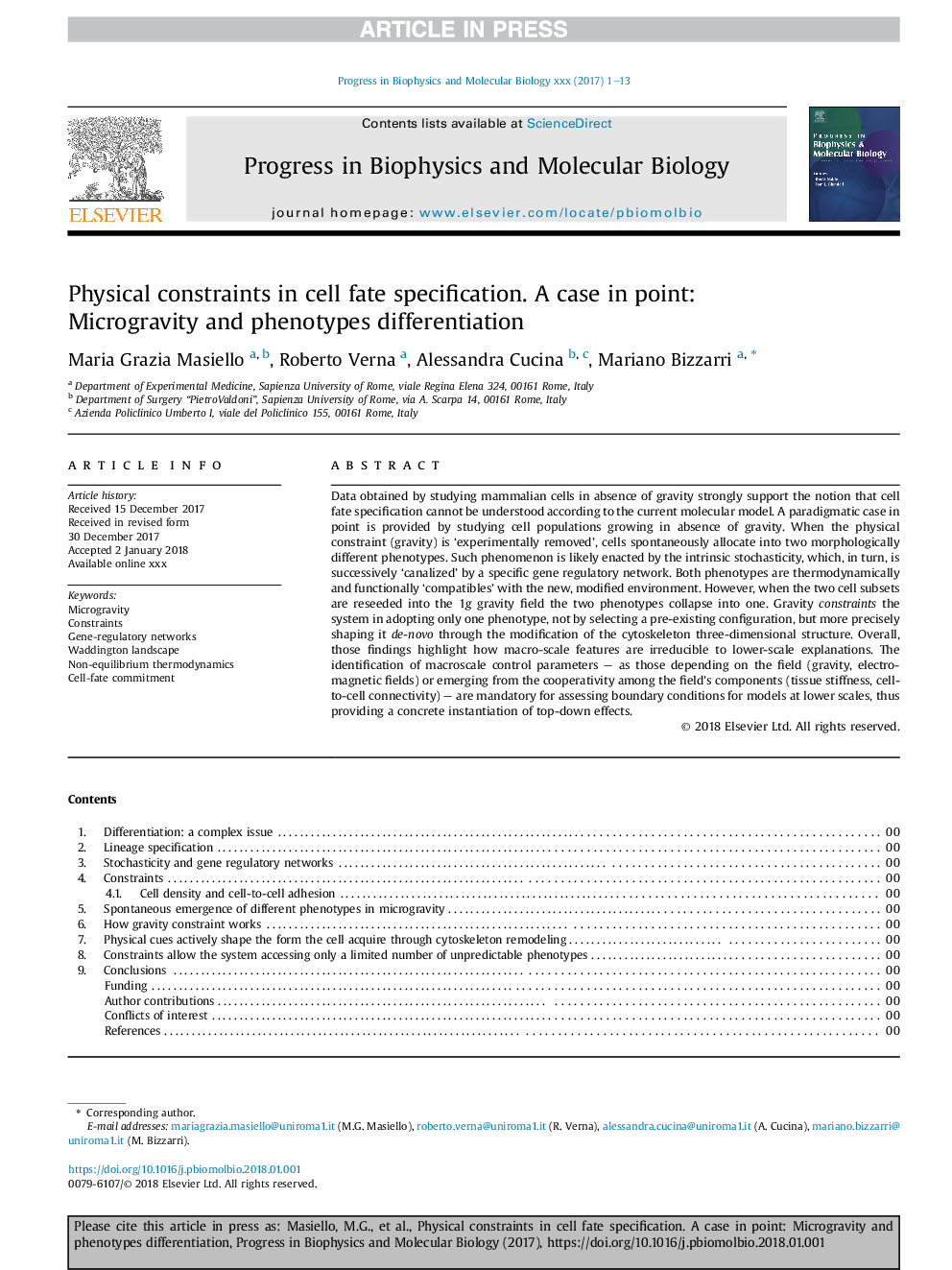| Article ID | Journal | Published Year | Pages | File Type |
|---|---|---|---|---|
| 8400243 | Progress in Biophysics and Molecular Biology | 2018 | 13 Pages |
Abstract
Data obtained by studying mammalian cells in absence of gravity strongly support the notion that cell fate specification cannot be understood according to the current molecular model. A paradigmatic case in point is provided by studying cell populations growing in absence of gravity. When the physical constraint (gravity) is 'experimentally removed', cells spontaneously allocate into two morphologically different phenotypes. Such phenomenon is likely enacted by the intrinsic stochasticity, which, in turn, is successively 'canalized' by a specific gene regulatory network. Both phenotypes are thermodynamically and functionally 'compatibles' with the new, modified environment. However, when the two cell subsets are reseeded into the 1g gravity field the two phenotypes collapse into one. Gravity constraints the system in adopting only one phenotype, not by selecting a pre-existing configuration, but more precisely shaping it de-novo through the modification of the cytoskeleton three-dimensional structure. Overall, those findings highlight how macro-scale features are irreducible to lower-scale explanations. The identification of macroscale control parameters - as those depending on the field (gravity, electromagnetic fields) or emerging from the cooperativity among the field's components (tissue stiffness, cell-to-cell connectivity) - are mandatory for assessing boundary conditions for models at lower scales, thus providing a concrete instantiation of top-down effects.
Related Topics
Life Sciences
Biochemistry, Genetics and Molecular Biology
Biophysics
Authors
Maria Grazia Masiello, Roberto Verna, Alessandra Cucina, Mariano Bizzarri,
